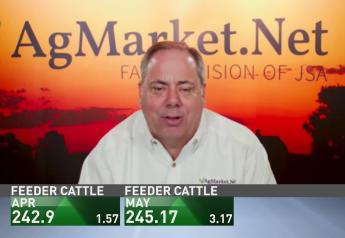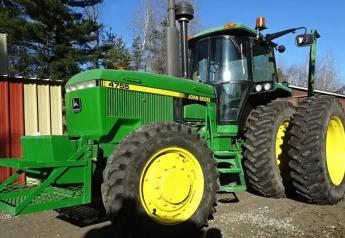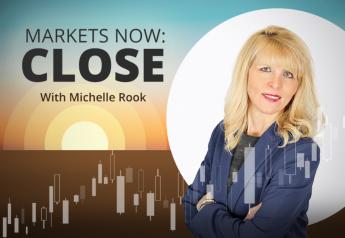How a Texas Farmer Killed Agriculture’s Debt Dragon

Casey Kimbrell grows several thousand of acres of corn and cotton, but he typically has no operating loan. He did not marry into money, inherited nothing beyond a story pulled from the Book of Job, and insists his escape from debt is unremarkable: “I’m not special in any way. Maybe not everyone can do what I’ve done, but anyone sure can.”
In 2007, at 37 years young, Kimbrell pulled the handbrake on life, questioned the fundamentals of agriculture, and determined to topple the assumed pillar of farm function—debt. “I once believed debt-free farming was impossible,” he says. “I spent half a lifetime believing farmers had to have payments. I’ve done foolish things with money and I’ve made my share of mistakes, but now I know the truth: Debt does not have to be the economic reality of farming.”
How did Kimbrell go from bare-bones subsistence to ball-and-chain payments, but emerge with ownership of a major agriculture operation based on cash-on-the-barrelhead finance? Rewind to 1979—a gut-wrenching year of pain and loss that indelibly shaped the psyche of a Texas farm boy.
Annus Horribilis
Down the years and links of a five-generation farming chain, the Kimbrell clan broke ground on the East Coast, skipped to Tennessee, bounced to Oklahoma, and dropped into Texas. As with many early American farming families, they wore out the dirt in a particular locale and moved on in search of better bounty, essentially moving one state per generation.
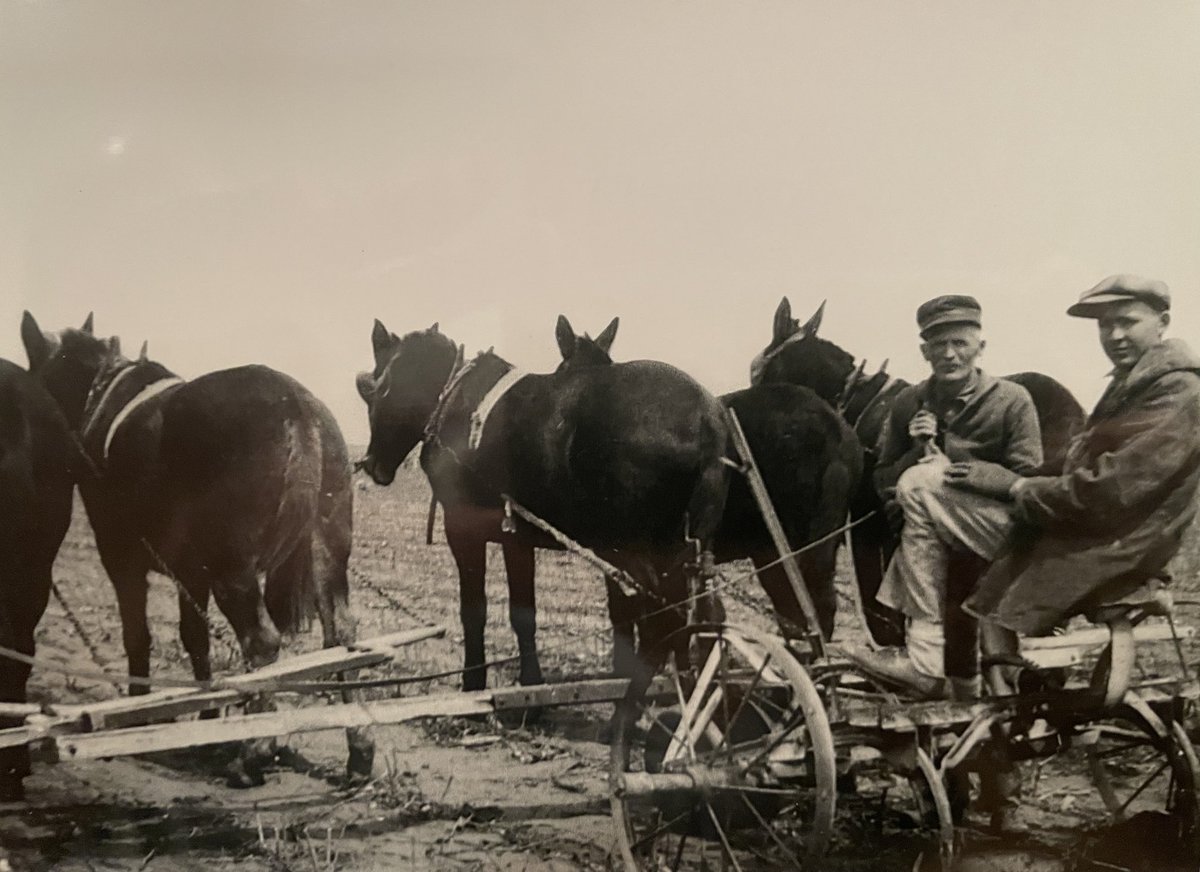
In the 1970s, under the eye of his parents, Don and Carolyn, Casey Kimbrell spent a childhood running the rows with two brothers, Kyle and Shawn, in the diesel, dust, and flats of Happy, Texas, roughly 30 miles south of Amarillo and 85 miles north of Lubbock along the ribbon of I-27. On 800 sun-bleached, dryland acres, Don scratched a toehold, but struggled to scale.
In 1979, the Kimbrell family endured a year-long wave of suffering that beggared belief. In mid-January, triggered by the threat of foreclosure and suffocated by anemic agriculture markets, Don hopped a John Deere G and drove off his Swisher County farm as part of a massive tractor caravan bound for Washington, D.C. Following an epic 1,600-mile journey atop an open-cab tractor in dead-of-winter elements, Don rolled up to the National Mall and threw the weight of his steel into the American Agriculture Movement’s Tractorcade protest.
While Don rattled the Carter Administration’s cage in D.C., his frequent farming partner and best friend, Darrell Smith, stayed behind in Happy to maintain machinery. In early February, Smith fell through a grate on a side-mounted cotton stripper, sliced open an artery, and bled to death. Smith’s freakish death, against the grain of infinitesimally lean odds, was a bitter pill for Don, and cast an opening pall over the year to come.
Almost four months after Smith’s demise, the three Kimbrell boys rose on a June morning, grabbed handfuls of breakfast, scrambled out of the house, and began piling into a pickup truck, intent on trailing their father into the fields for wheat harvest. Without warning, Kyle, 16, eldest of the brothers, collapsed in the gravel and died in the driveway, his heart overwhelmed by a hidden valve defect.
The following month, in July, Don’s grandmother and beloved matriarch of the clan, Nellie Kimbrell, also died. As the Kimbrells reeled from three successive lifeblood losses, the hell of 1979 changed course and overwhelmed the family’s finances. In September, Don lost his entire cotton crop to hail, with no insurance to cushion the fall. Desperate to make up for the cotton loss, and aware his wife, Carolyn, was pregnant with another son (Heath), Don planted wheat and bought cattle, hoping to salvage at least a modicum of gain.
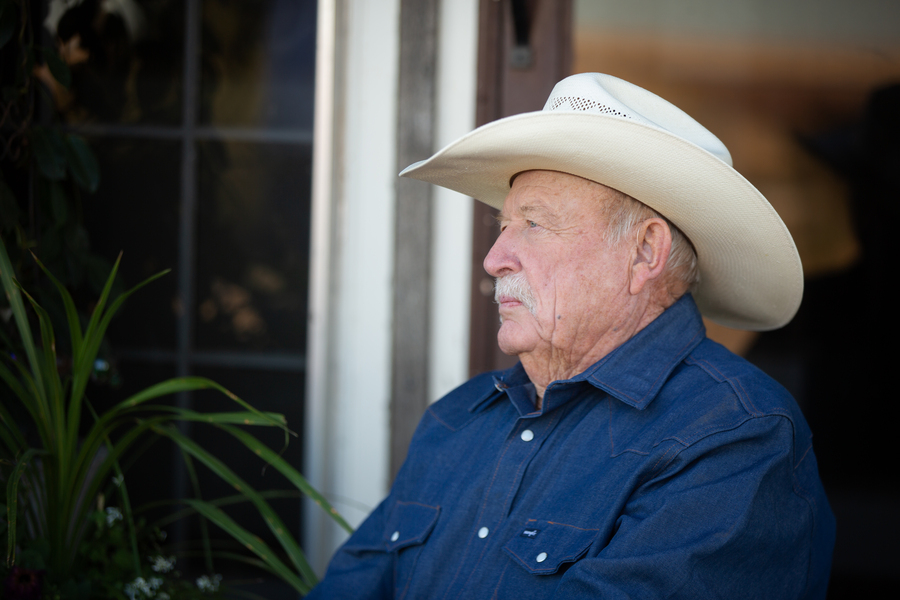
He worked the herd to the cusp of turnout, scheduled for Nov. 1 and the kick-in of winter storm insurance. Yet, one day prior—Oct. 31—a blizzard barreled into Happy on Halloween, and cruelly claimed half the herd. Annus horribilis.
Tattooed for life by the anguish of 1979, nine-year-old Casey Kimbrell watched his parents wash down 1979 with a glass of tears, unaware the battering was far from over—the 1980s farm crisis waited on the doorstep.
A Boy’s Decision
Three years later, in 1982, amidst a roar of farm foreclosures and skyrocketing interest rates, Don maintained the barest grip on farm control, and made extra dollars through feedlot work, essentially scraping for grocery money. “Dad was doing everything he could to just hang on,” Kimbrell recalls. “He’d bring home baby calves, and we’d lose about 70% of the ones he brought home, due to colostrum deficiency, but me and Shawn managed to raise up about 20 head to about 700 lb. each.”
At a financial breaking point, but unwilling to throw in the towel, Don approached the boys with a fork-in-the-road decision, Kimbrell recalls. “My daddy told us, ‘You’ve got a choice. You can sell your calves, keep the money for yourself, and we move to the city and a job for me in San Antonio. Otherwise, give me the money from the sale of those calves and we can make our land payments and stay on the farm.’”
Staring down the barrel of a 450-mile southeast move to suburbia and the gravity of a life-changing moment, particularly for two boys aged 12 and 16, the brothers made a quick decision: Prepare the calves for market. “The choice truly was left up to us, and we decided to stay on the farm,” Kimbrell explains. “Best decision I ever made. Changed the trajectory of my entire life.”
$100,000 Ball-and-Chain
With the specter of San Antonio in the rear-view mirror, the Kimbrells momentarily gained momentum and picked up significant rental land and custom farm ground, until the advent of the Conservation Reserve Program (CRP) in 1985, which pushed their supplemental acres beyond reach. In a nutshell, CRP cut the Kimbrell operation back to its original section and a quarter.
In 1988, Kimbrell graduated high school and half-heartedly enrolled in college, but spurned the classroom for the road, hauling grain with Shawn for several years, always on the lookout for farmland to rent. “I suppose that having seen the hardship my parents went through in agriculture, some people would have tried to get as far from farming as possible,” Kimbrell says. “I can’t explain why I didn’t end up in another occupation. Farming was me; maybe it’s just that simple.”

In 1994, Kimbrell found irrigated farmland for rent, 40 miles southwest of Happy, in Castro County. Kimbrell threw in his lot with three other young farming bucks in a four-man partnership highlighted by extreme inexperience—a recipe for calamity. Plainly stated, there were too many cooks in the kitchen. The foursome was bound for a life lesson in managing crop insurance risk.
As out-of-the-gate producers, the quartet didn’t qualify for multi-peril insurance, and with corn already in the ground, the green farmers set out to buy hail coverage. “We called the insurance guy to bind hail, but his wife answered and said she’d tell him what we needed,” Kimbrell recalls. “Of course, that ain’t what happened and the ball got dropped.”
One ill-timed hailstorm later, the newly formed farming partnership was in dire straits. “It was unbelievable,” Kimbrell describes. “We got hailed out just bad enough to ruin the crop, but not replant. I’ll never forget later at harvest trying to cut corn that was so full of weeds and tangled. We had no money to begin with and then got hammered.”
And Kimbrell’s share of the loss? $100,000.
From the get-go of a solo farming career, the 24-year-old was manacled to a $100,000 debt. Crestfallen, but undaunted, he financed the $100,000 on a seven-year FSA note and stood back to his farming feet, drawing on the mettle he’d watched his parents repeatedly display. The hail insurance debacle served as a lesson learned: Casey Kimbrell, Texas Panhandle farmer, never lost money in a crop season again.
Heap of Humble Pie
Kimbrell spent three years learning the ropes in Castro County. As 1994 was a schooling in insurance risk, 1996 was Kimbrell’s seminal lesson in corn contract management, when he sold his entire corn crop for a nickel off top-market price. “It just about ruined me,” Kimbrell says. “I was young and just getting rolling with my marketing skills, so I honestly thought I was the smartest guy in the room and I believed way over $4 per bushel was the new norm. It was bad for my mentality and it came back and bit hard.”

Kimbrell drove a corn stake at the $4 mark and refused to budge.
In 1997, Kimbrell left Castro County for better ground in the upper Panhandle, moving 130 miles north to Sunray, to farm solo and equipment share with his brother, Shawn. A year later, his corn marketing confidence came with a cost. “I went to an elevator and the merchandiser said I should contract for $2.70,” Kimbrell recalls. “Specifically, he said, ‘Looking at history, $2.70 is a good price right now and you oughta consider getting some on the books.’ No way on earth. I was too smart and wasn’t about to take anything so low.”
“Talk about humbling,” Kimbrell continues. “I sold my corn that year for $1.80. Another tough lesson learned.”
Chiseling Debt
Field by field, Kimbrell added acreage and profited each year, although walking a thin margin wire. He was threading the financial needle each season—a commendable performance, but also a precarious practice for the long-term.
“For the first 10 years of my farming career, I spent idle moments trying to figure out what to do when I went broke. I was trying to come up with an escape plan because I was inevitably going to need one. We had years when we could pencil a $100 margin on corn and that was awesome. In other words, I was risking everything every year,” Kimbrell says.

“Growing up I’d seen farmers go under, over and over in both row crops and cattle. Every farm bill we were hearing rumors the subsidies were disappearing. I was able to make money, but I knew I was finished if subsidies weren’t there. That may leave people with the impression I’m pro-subsidy, but I’m not. My opinion: Subsidies keep prices down. None the less, in those market years, I’d have been in the hole without subsidies, and I was always one big stumble away from serious trouble.”
In farming regions across the United States, the public drives past agriculture operations and sees the glint of grain bins, big trucks, giant machinery, and large tracts of land—the outward trappings of success. Yet, behind the appearances of prosperity, an ever-present taskmaster often lurks—debt, according to Kimbrell. “I’m not trying to be critical of anyone, because I’ve had plenty of stumbles myself,” he says, “but being up to your eyeballs in dangerous amounts of debt is normal for lots of operations and everybody who is honest knows it.”
Kimbrell is a child of 1980s agribusiness, and in his early adult years, he accepted a given: In agriculture, a producer must consistently borrow money in order to function—without exception. His experience in agriculture entailed deep debt for all producers, due to unshakeable economic realities. “I lived where everything was about making a payment. That is what everyone else did, so why not me? That’s a pretty dangerous spot to be in where you just assume something has to be without finding out for yourself.”
However, in 2007, while rolling in the tractor cab, Kimbrell heard radio host Dave Ramsey address personal debt. “I’d always lived tight and thrifty in my personal life, but what about the farm? Why not do the same on our farm?”
Intent on making a monumental life change, Kimbrell had determination and recognition on his side. He also had a spousal ace in the hole: Annie Kimbrell. “She is the smart one,” Kimbrell says. “Annie is a saver and a wise one with money. Her granddad was one of the wealthiest guys I’d ever met, but he went bankrupt in late 1980s and died homeless. Annie was determined there would be no repeat.”
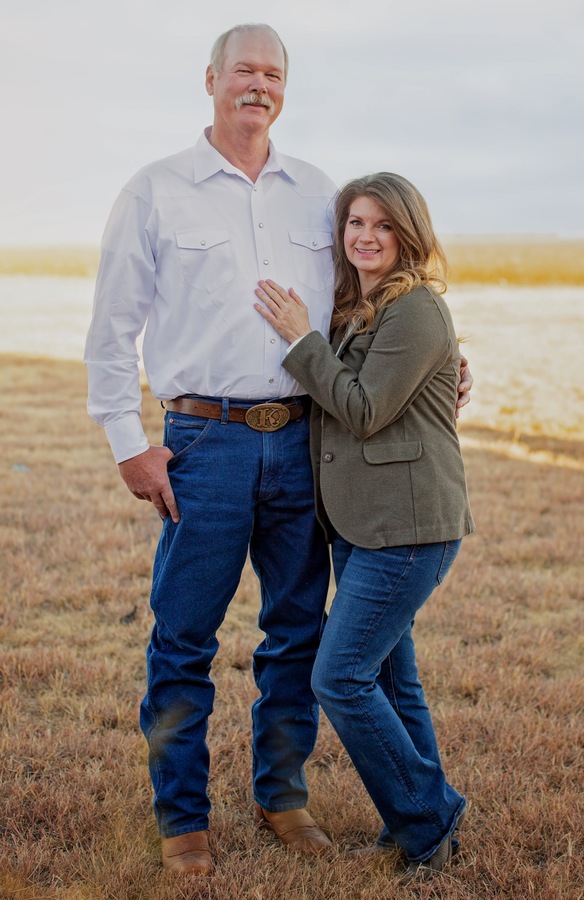
From the start, Annie embraced the prospect of tackling farm debt: “I absolutely had no doubt we would be successful,” she says. “Once we really thought about the steps we needed to take and had a plan in place we knew we could do it. The freedom we envisioned for our future made the journey easier. We’re both pretty hardheaded and not easily deterred once we have a goal in mind.”
Kimbrell was slapping down $140,000 in equipment payments per year, often driving a given piece for roughly 4,000 hours before a trade-in. Enough. “Why not pay off the pieces we had, drive them long-term, and always pay cash or just don’t buy? We decided we wouldn’t buy any machinery from then on, unless we could write a check on the spot.”
Starting in 2008, Kimbrell began chiseling at equipment notes. “We started paying off a single vehicle and moved to a tractor, then doubled on the next tractor, and then kept going. I was so tired of living where you’re constantly thinking about one hiccup and being done. No more.”
Kimbrell’s entire machinery fleet was paid off in four years. And with $140,000 in machinery bills erased from the books, he immediately diverted the money into land payments. In 2012, he jumped on land debt, paying off acres section by section. “By 2014, we had all our equipment and land paid for—5,400 acres, and by 2015 we weren’t borrowing money for an operating loan. In 2016, we paid cash for a half section, developed it, put irrigation in and drilled a well, but didn’t borrow.”
Presently, Kimbrell owns 7,400 acres of cotton, corn, grain sorghum, wheat, alfalfa, CRP, and rangeland. “I don’t want to give the impression I’ll refuse a loan in the right circumstances,” Kimbrell details. “We currently have an operating loan. We paid cash for a place in Colorado in 2019, and borrowed some operating money. It made more sense to do that because land debt accrues interest year-round and we only carry operating debt part of the year. We would’ve worked that off this year, but we traded a 620-acre farm for a 1,400-acre farm and spent a considerable amount of money developing irrigation on the new farm.”

From 2014-2019, Kimbrell’s operation was debt-free, other than a seasonal loan for a cotton stripper-baler paid off each fall after harvest. “Those $750,000 machines are tough to pay for right before harvest with cash,” he says. “In 2019, we financed one that we didn’t pay off because its interest rate was lower than a land note, so we’re working it out over more years. I plan to be debt free again soon. Right now, Uncle Sam is punishing people with cash through low interest rates and inflation. This is the reason for our recent land purchases.”
What advice does Kimbrell, 51, have for farmers tackling debt issues?
“Don’t get so focused on saving money that you ignore your family; I’m guilty of that and did that sometimes. If I had a do-over, the one thing I’d change is to make sure I spent even more time with my family. Also, don’t try to get out of debt overnight and don’t believe the naysayers because there will be many. Someone will always be there to tell you it’s not going to work, but I’m here to tell you that getting out from under debt can be done on your farm, and at the least you can make sure one bad year won’t take you under.”
Advocate for the Little Guy
As of 2021, 30 years gone from the dryland fields of Happy, and 40-plus years distant from the upheaval of 1979, Kimbrell is a study in gratitude, a plain-spoken realist mixed with a humble dose of self-deprecation, fueled by several key factors, according to Annie.
“Foremost is his belief that everything we have in this life belongs to and is attributed to God,” she explains. “Casey has a strong desire to use the abilities and opportunities he has been given in a responsible and beneficial way, and to be wasteful with his time, money, or capability is just not an option.”
“Another driving force is the memory of scraping pennies together to pay bills, asking various financial institutions to fund our business, and worrying about where to get a job when we go broke,” Annie adds. “Those things are such a heavy burden to carry and not the way of life he wanted for himself or his family. His willingness to think outside the norm of the traditional farming operation has been a huge blessing to us and our children.”
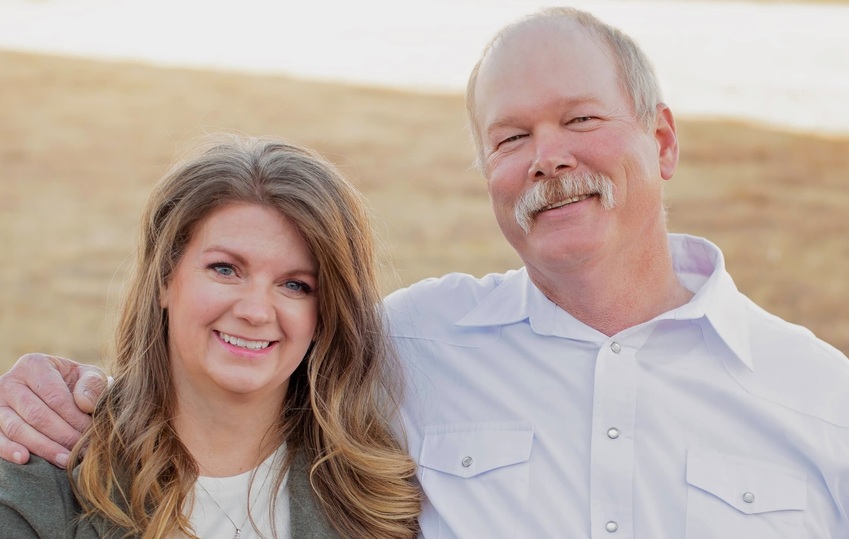
Kimbrell is presently at the cusp of a new life chapter, and he has loosened his grip on the farm reins. More isn’t satisfying, he contends: “I know I’ve been molded by the financial trauma I’ve witnessed in my life, all the way into my upper 30s. I’ve seen other guys lose their families and home life, all while sitting on an agriculture empire that always expands. Did they really gain anything? No.”
For the past two years, Kimbrell has divided his farmland between his son, Austin Kimbrell, and four other employees in a 50-50 split. In 2022, the split will shift to standard lease payments.
Kimbrell’s farming success, he insists, is heavily related to the diligence of his long-term employees. “I think about how well my employees have treated me over the years. They have been dedicated, trustworthy, decent, and instrumental. Now, I want to reward them by giving them the chance to have genuine skin in the game. I’m always going to be an advocate for the little guy because that’s really who I am.”
Within several years, Kimbrell and Annie hope to move to a picturesque plot in Colorado, a 240-acre alfalfa farm. “I’m so excited about this step in our lives,” Kimbrell says. “I’m not a very smart man and nothing I did right in my life has been due to intelligence, but rather to recognition and determination. My parents taught me anyone can be successful, but that doesn’t mean everyone will be. We all make our choices and deal with the consequences.”
“Thirteen years ago I’d have told you it was impossible to get out of farm debt, but I know it can be done because I know my own faults and I’m not special,” Kimbrell concludes. “Even now, getting out of debt can still happen in modern farming.”
For questions or to read more stories from Chris Bennett (cbennett@farmjournal.com), see:
Skeleton In the Walls: Mysterious Arkansas Farmhouse Hides Civil War History
While America Slept, China Stole the Farm
Bizarre Mystery of Mummified Coon Dog Solved After 40 Years
Where's the Beef: Con Artist Turns Texas Cattle Industry Into $100M Playground
The Arrowhead whisperer: Stunning Indian Artifact Collection Found on Farmland
Fleecing the Farm: How a Fake Crop Fueled a Bizarre $25 Million Ag Scam
Truth, Lies, and Wild Pigs: Missouri Hunter Prosecuted on Presumption of Guilt?
US Farming Loses the King of Combines
Ghost in the House: A Forgotten American Farming Tragedy
Rat Hunting with the Dogs of War, Farming's Greatest Show on Legs
Misfit Tractors a Money Saver for Arkansas Farmer
Predator Tractor Unleashed on Farmland by Ag's True Maverick
Government Cameras Hidden on Private Property? Welcome to Open Fields
Farmland Detective Finds Youngest Civil War Soldier’s Grave?
Descent Into Hell: Farmer Escapes Corn Tomb Death
Evil Grain: The Wild Tale of History’s Biggest Crop Insurance Scam
Grizzly Hell: USDA Worker Survives Epic Bear Attack
A Skeptical Farmer's Monster Message on Profitability
Farmer Refuses to Roll, Rips Lid Off IRS Behavior
Killing Hogzilla: Hunting a Monster Wild Pig
Shattered Taboo: Death of a Farm and Resurrection of a Farmer
Frozen Dinosaur: Farmer Finds Huge Alligator Snapping Turtle Under Ice
Breaking Bad: Chasing the Wildest Con Artist in Farming History
In the Blood: Hunting Deer Antlers with a Legendary Shed Whisperer
Corn Maverick: Cracking the Mystery of 60-Inch Rows


